Are you struggling to find the perfect fence design that complements your modern home? You’re not alone. Many homeowners find it challenging to balance aesthetics, privacy, and security when choosing a front yard fence. The good news is that modern fence designs offer various options that can meet all these needs.
In today’s world, a fence is more than just a boundary; it’s an extension of your home’s personality. A well-chosen modern fence design can provide the perfect blend of privacy, security, and aesthetic appeal, enhancing your property’s overall look and feel. So, let’s dive in and explore how to make the best choice for your front yard.
Understanding Your Needs and Preferences
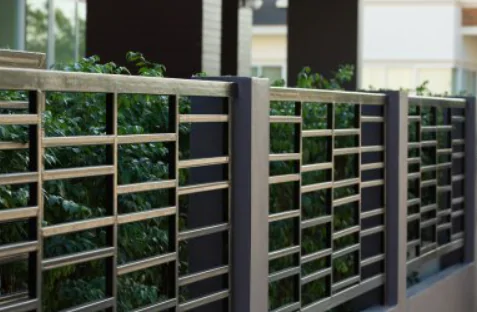
Importance of Identifying Personal Needs and Preferences
When it comes to choosing the perfect modern fence design for your front yard, the first step is understanding your own needs and preferences. This isn’t just about picking something that looks good; it’s about finding a fence that serves a purpose and adds value to your property. Having spent years in the construction and design industry, I can’t stress enough how crucial this initial step is. A fence is a long-term investment, and you’ll want to make sure it aligns with what you’re looking for.
Factors to Consider in Identifying Needs
Three primary factors usually come into play when identifying your needs for a fence: privacy, security, and aesthetics.
| Privacy | If your home is close to a busy street or you have nosy neighbors, a fence offering good privacy might be your priority. |
| Security | For those living in areas where security is a concern, a fence that’s difficult to climb over or breakthrough will be essential |
| Aesthetics | Lastly, you’ll want a fence that complements your home’s exterior and adds curb appeal. |
Each of these factors will influence the materials you choose, the height of the fence, and even the specific design elements like gates and posts.
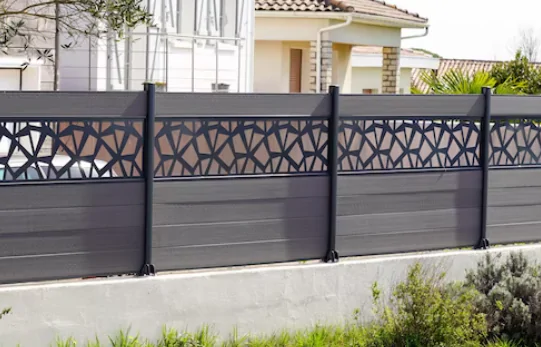
Tips on Aligning Your Preferences with the Existing Design of Your Home
Once you’ve identified your needs, the next step is to align them with your home’s existing design and architecture. Here are some tips to help you do that:
- Material Consistency: Try to match the fence material with other exterior elements of your home. For example, a wooden fence might be a good fit if your home features many wooden accents.
- Color Coordination: The color of your fence should match or complement your home’s exterior color scheme.
- Design Harmony: Look for fence designs that echo the architectural elements of your home. For instance, a simple, sleek fence would be most appropriate if your home had a modern minimalist design.
By taking the time to understand your needs and align them with your home’s existing design, you’re not just getting a fence but the perfect one. And when it comes to making such a significant addition to your property, settling for anything less than perfect is not an option. So, take your time, research, and make an informed decision that you’ll be happy with for years to come.
Overview of Different Modern Fence Design Options
Modern Fence Designs, Including Materials and Styles
Modern fence designs have come a long way from the traditional picket fences and chain-link options. Today, you have many materials and styles to choose from, each offering its unique blend of functionality and aesthetic appeal. Having been involved in numerous home improvement projects, I’ve seen firsthand how the right fence can transform a property. Here are some popular materials and styles of modern fencing:
- Metal Fences: These are often made of aluminum or steel and are known for their durability and sleek design.
- Wooden Fences: A classic choice, wooden fences offer a warm, natural look and can be customized in various styles.
- Vinyl Fences: These are low-maintenance options in various colors and designs.
- Composite Fences: Made from wood and plastic, these fences offer the best of both worlds.
Features and Benefits for Each Type
Each type of modern fence design comes with its own set of features and benefits:
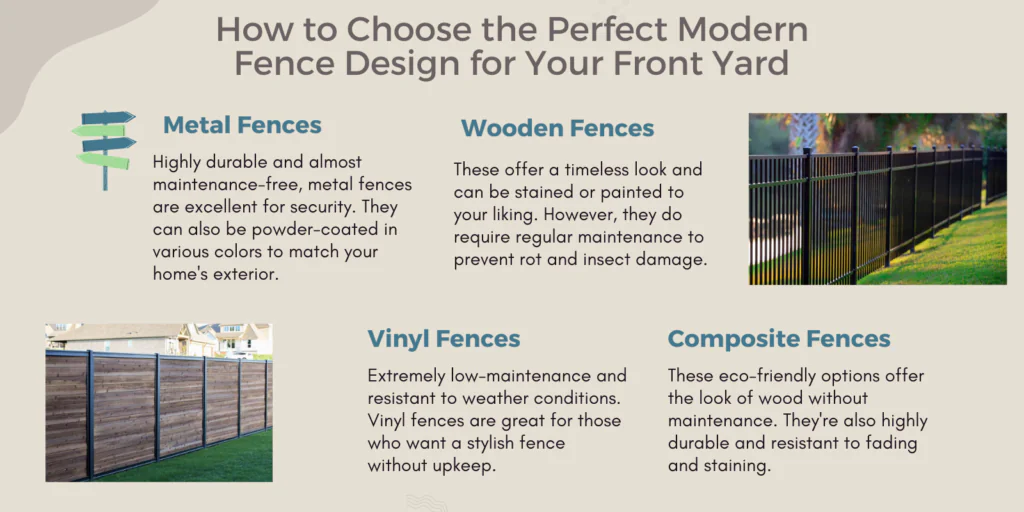
How to Match the Fence Design with Your Home’s Architectural Style
One of the most overlooked aspects of choosing a fence is ensuring that it harmonizes with your home’s architectural style. A fence that clashes with your home can detract from the overall aesthetic and even affect property value. Having consulted on various home improvement projects, I’ve seen how a well-matched fence can elevate a property’s appeal. It’s not just about the fence or the house; it’s about how they complement each other to create a cohesive look.
Tips on Matching Fence Designs with Architectural Styles
Different architectural styles call for different types of fences. Here are some general guidelines:
- Modern Homes: Sleek metal or composite fences work well with modern architectural styles, emphasizing clean lines and minimalist design.
- Traditional Homes: Wooden fences, particularly those with intricate designs, match homes with a more traditional architectural style.
- Craftsman Homes: Consider fences made of natural materials like wood or stone, which complement the craftsmanship of these types of homes.
- Colonial Homes: Picket fences are almost iconic when it comes to colonial-style homes, offering a look that is both classic and charming.
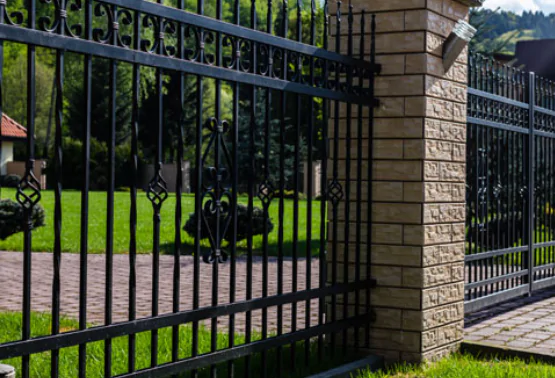
Ideas for Mixing and Matching Styles for a Unique Look
If you’re looking to break the mold, mixing and matching different styles can create a unique and personalized look. Here are some ideas:
Two-Tone Fences, use two different materials, like metal and wood, to create a modern and warm fence. Accent Features, add a modern gate to a traditional fence, or vice versa, to create a focal point that captures attention. Pattern Play, use different fence patterns or designs on different sides of your property for a dynamic, multi-faceted look.
Remember, the key to a successful fence design is harmony. Whether you’re going for a traditional look or something more avant-garde, the fence should serve as an extension of your home, enhancing its character and style. So, take your time, weigh your options, and don’t hesitate to consult professionals if you’re unsure. Your fence is a long-term investment, and it’s worth getting it right the first time.
Maintenance and Durability
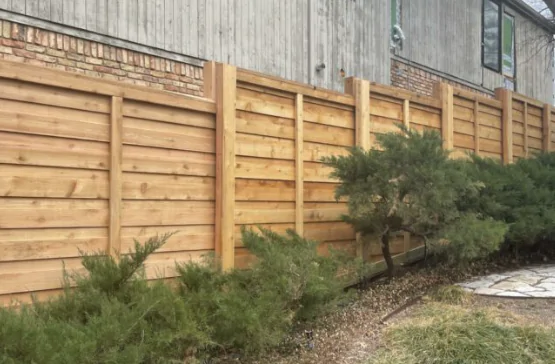
Longevity and Maintenance Requirements
When choosing a fence, it’s not just about the initial appeal but also how well it will stand the test of time. Different materials and designs have varying longevity and maintenance requirements. For example, metal fences, particularly those made from aluminum or steel, are highly durable and require minimal upkeep.
On the other hand, wooden fences, while charming, may require regular staining or painting to prevent rot and insect damage. Having overseen multiple fence installations and maintenance projects, I can attest to the importance of considering these factors.
Comparison of Costs Associated with Maintaining the Different Fence Materials
The cost of maintaining your fence over the years can add up, and it varies depending on the material:
| Metal Fences | These generally have low maintenance costs. Occasional cleaning and rust-proofing are usually all that’s needed. |
| Wooden Fences | The cost of staining or painting and potential repairs for rot or insect damage can make wooden fences more expensive to maintain in the long run. |
| Vinyl and Composite Fences | These materials are virtually maintenance-free but may require occasional cleaning, which is generally less costly than maintaining a wooden fence. |
Tips for Choosing Durable Materials and Designs
If durability is a top priority, here are some tips to guide your choice:
- Quality Over Price: Don’t compromise on the quality of materials. It may cost more upfront, but it will save you money on maintenance and potential replacements down the line.
- Check Warranties: Always check if the fencing material comes with a warranty. This not only provides peace of mind but is also an indicator of the material’s quality.
- Consult Professionals: If you’re unsure about what material or design to choose, consult with professionals who can provide insights based on your specific needs and environmental conditions.
A fence is more than just a decorative feature; it’s an investment in your property. By considering long-term maintenance and durability, you’re saving money and ensuring that your fence remains an asset rather than becoming a liability. So, take your time to make an informed decision, and you’ll enjoy the benefits of a beautiful, durable fence for years to come.
Conclusion
Choosing the perfect modern fence design for your front yard is a multifaceted decision that involves various factors like personal needs, aesthetics, and long-term maintenance. Having been involved in numerous projects that require making such choices, I can say that the key to a successful fence installation is thorough research and thoughtful consideration of your specific needs and the architectural style of your home.
If you’re still uncertain, don’t hesitate to consult professionals in the field. They can provide tailored recommendations that align with your requirements, ensuring that your investment not only adds beauty but also value to your property.


